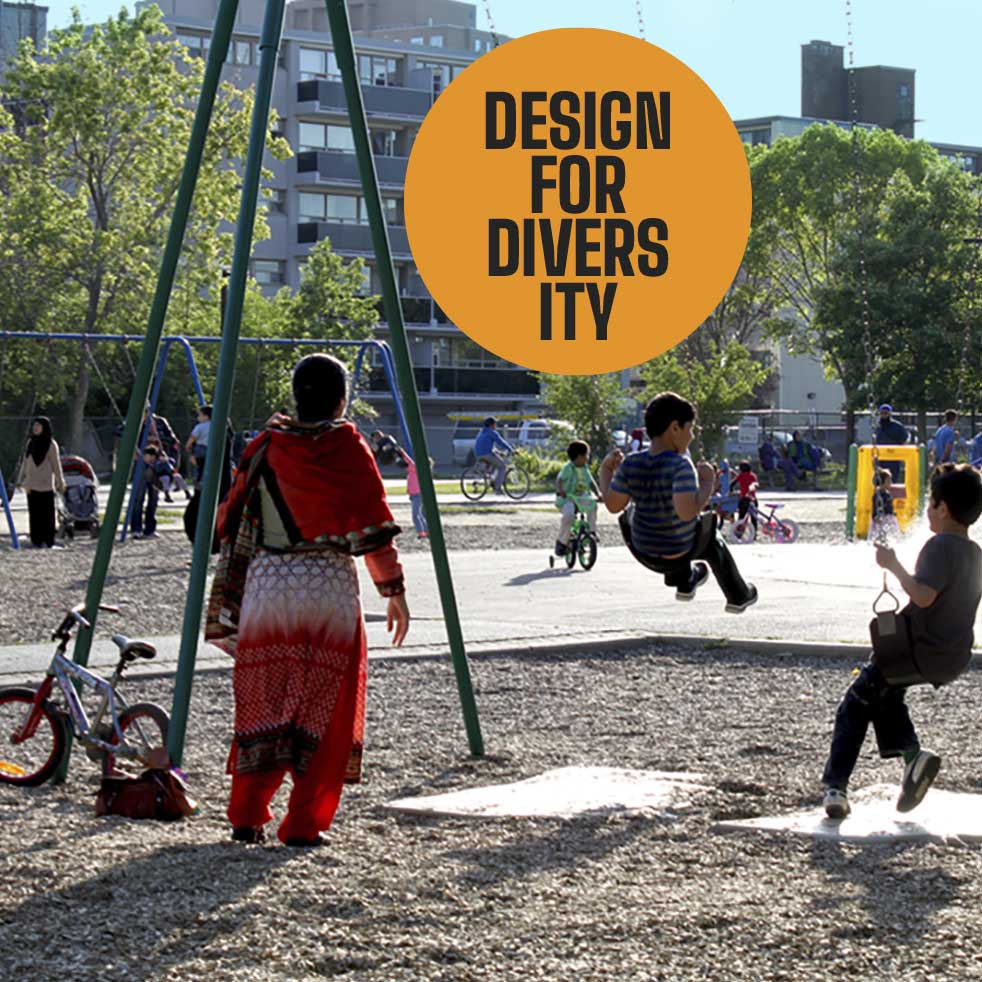
Keep
Doors
Open
by OpenCity Projects
Photo: Michi McCloskey
Expanding the idea of universal design and accessibility, it is necessary to explore how perceptual barriers can be just as limiting as physical ones
Well-designed public spaces are easy to access and make people feel safe in them. Keeping doors open, to create visibility and a sense of security, is a basic Design for Diversity requirement.
It seems obvious but a crucial element of designing for culturally diverse communities is to ensure that easy entry and movement is accessible to everyone. Universal design principles are increasingly embedded in legislation that mandate changes to every aspect of our communities from doorways to sidewalks. It’s a positive trend but only addresses concrete design challenges. Expanding the idea of universal design and accessibility, it is necessary to explore how perceptual barriers can be just as limiting as physical ones.
Going one step beyond universal design requirements for mobility, such as automatic doors, gentle grades, and barrier-free paths, there are other physical design elements that improve accessibility but are less obvious. For example, consistently-spaced light fixtures that illuminate a public space at night can transform it from a frightening space to a safe shortcut home after a night out with friends. Alternatively, ample seating serves as a signal to the elderly and others with mobility challenges that a space is safe for them to enter because they are able to see where they can take a break. Providing public washrooms significantly lowers the barrier to entry and participation for street-active or low-income people, who can’t afford to use washrooms at nearby cafes or restaurants, as well as families.
Another accessibility consideration relates to the overall configuration and distribution of physical elements. A fenced-off public space with few or congested entrances sends a subtle message that there are proper and improper ways to access and behave in a space. The opposite is also true. A park with clear sightlines, multiple exits and entrances and paths to destinations is extending a loud and clear welcome.
Accessibility is a challenge that cuts across every barrier. For people who are already discouraged from participating in a city’s public life, such as newcomers or minority community members, physical barriers exponentially increase their disenfranchisement. Design for Diversity is all about creating as many options as possible with minimal intervention. Making minor changes, when considering accessibility from this perspective, will result in a more lively and animated public space.